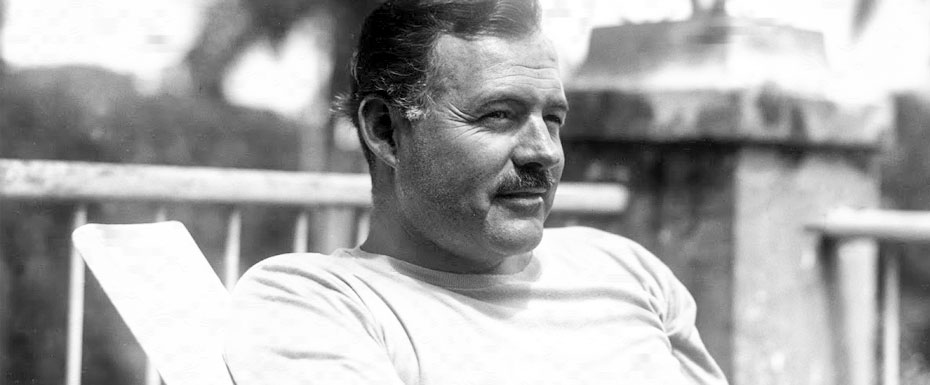
Ernest Miller Hemingway is the greatest writer of our time, winner of the Nobel and Pulitzer Prizes, who became famous not only for his works but also for a life full of interesting events and adventures. Although he ended his life tragically, Ernest created outstanding works that still fascinate millions of people around the world. Books written in the modernism and realism styles could captivate even those who prefer other genres. Hemingway wrote about his surroundings and feelings, revealing facets of human life and describing the problematic relationships between people.
With a recognizable style that combined brevity and richness, his works are still read with rapture by people of all ages, genders, and religions. In my article, I have selected the best works of the American novelist and journalist, which became the calling card of Ernest Hemingway and managed to make his contribution to modern world literature.
For Whom the Bell Tolls

In first place is a novel that, immediately after its publication in 1940, entered the world’s top ten works and has held that position ever since, being an undeniable bestseller that is a must-read book. The book’s title is taken from a sermon preached by the seventeenth-century priest John Donne, and a passage from it became the epigraph. It describes war, its cruelty, suffering, and hatred, the value of human life as a unit, and its devaluation in the masses; in other words, its unvarnished story about real war. It’s intended both for those who have survived violent events and those who have never faced them so that everyone will never forget what catastrophes war leads to.
The action takes place in 1937 in Spain. The center of the story is a young soldier, Robert Jordan, who is sent behind enemy lines to blow up a bridge. The book describes a few days in the life of a partisan unit where each character is colorful and exciting in their own way. And although the author almost does not describe the experiences of the main characters, the reader themselves guesses about them.
The Old Man and the Sea

On the second place of the rating is the great work, which almost every book-lover is familiar with. Ernest Hemingway was awarded the Nobel Prize in 1954 for this book. Unfortunately, it was the last work of the novelist, published during his lifetime.
The main character is a Cuban fisherman who faces hardships every day, but he appreciates everything that surrounds him, admires the beautiful world, and shows an example of optimism in any situation. Old Santiago has been unable to catch a single fish for almost three months, so he has become considered unlucky. Only the boy Manolin believes that he will succeed and helps his adult friend in every possible way, despite his father’s ban.
Finally, on the 85th day, the old man meets fortune and catches a giant marlin over 5 meters long. For two days, Santiago tries to keep the fish on the line and reach the shore with it. He is forced into an unequal battle with the sharks on the third day, killing five of them but losing almost all of the marlin he fished.
The old man interacts with the animals throughout the narrative as an equal. He has compassion for the marlin, understands its feelings, talks to the sharks, admitting defeat and saying that they have killed his dream and brought him back into the unlucky camp.
“The Old Man and the Sea” is a book that helps you rethink many of life’s moments, see new facets, and become happy with any little things that previously seemed mundane.
A Moveable Feast

The third place of the rating deservedly goes to the work consisting of small essays about the life of Ernest Hemingway in Paris. The autobiographical book tells not only about the writer’s wife and young son but also about all the people he met along the way during that period. To avoid inaccuracies in the narrative of the most romantic city in the world, the writer visited Paris several times to clarify the smallest details. The lyrical mood comes immediately after the first page, and the feeling of warmth and festivity remains long after reading it.
The memoirs revealed new features of the writer’s talent: observation, sincerity, curiosity, and bright personality. He showed all sides of human nature, his thoughts on the craft and literary brethren. Many still consider the 20th years of the twentieth century the “golden age” of Ernest Hemingway. In this book, the author describes his first encounter with Russian writers whose works he saw in a bookstore. He was touched by the power of the talent of Dostoevsky, Chekhov, and Turgenev. But what left a memorable mark after reading were the works of Tolstoy, who described the war in a way that no one else had done before him.
If you have not read “A Moveable Feast,” then don’t delay it and enjoy the interesting line, the incredible beauty of Paris, so lovingly described by the author, and once again make sure that Hemingway was not in vain recognized as one of the best novelists of our time.
A Farewell to Arms

The book, ranked number four, made Ernest Hemingway famous. Published in 1929, it immediately won the love of the readership, the critics’ approval, and three years later, it was successfully adapted into a film by American director Frank Borzage.
The plot of the novel, like all of the author’s works, is simple, not twisted and complex, not burdened with parallel lines, the text is lively and understandable to readers of any age. The action takes place during World War I, where an officer in the Italian army is wounded and goes to the hospital, where at first sight falls in love with his countrywoman, a nurse Catherine Barkley. After his recovery, he miraculously escapes both an enemy bullet and a firing squad for alleged desertion. Frederick Henry, realizing all the horrors of war, the injustice and hatred of any human unit involved in these brutal events, withdraws from the war and crosses by boat to Switzerland with his beloved.
Although the author claimed that the work was purely literary, fictional, many plot lines are related to the writer’s real life. He was also in the war, where he was wounded and hospitalized for treatment, during which he had an affair with a nurse. He later admitted to the editor that he simply did not want to advertise his time at the front and severe injury.





